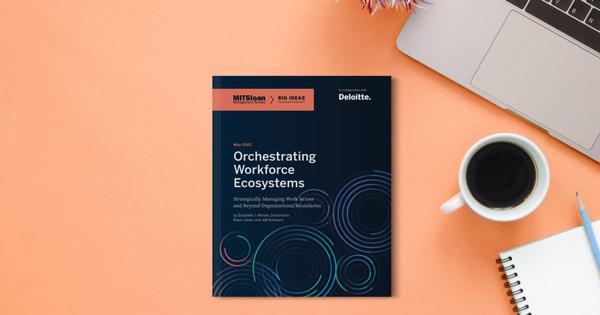Executive Summary
Confronting the challenges of intentionally leading and coordinating workforce ecosystems — what we call orchestrating workforce ecosystems — is at the heart of this report. This issue is especially timely given the ongoing workforce shifts brought about by the COVID-19 pandemic, shifting worker preferences, and the changing nature of work.

This year’s research shows that orchestrating a workforce ecosystem is a multifaceted effort that involves integration among many business functions. In mature legacy organizations in particular, we see companies changing basic management practices around how they access, engage, and develop workers; we see leaders adapting to a changing workforce where they have more contributors but less control. In some cases, we see upwards of 30%-50% of an organization composed of contingent workers, and organizations increasingly relying on third parties to deliver some of their most essential services. With laws preventing traditional performance management for contingent workers, and with companies increasingly relying on arms-length contracting for critical services, some leaders have limited management options with a large percentage of their workers.1 We see executives often struggling to deal with a range of cultural issues as well: How far should they go to include external contributors in existing corporate culture? To what extent do diversity, equity, and inclusion principles and practices apply to external workers?
Our research shows that companies that are most intentionally orchestrating their workforce ecosystems have five common characteristics. They are far more likely than other organizations to:
One thing our research makes clear: Leaders who view their workforce as an ecosystem structure tend to think differently about, and act differently toward, their workforce than leaders who view their workforce strictly in terms of hired (usually full-time) employees. What’s more, senior leaders and managers of functional areas report seeing the need and opportunities to work together in new ways.
This report marks the third yearand Deloitte have jointly explored the future of the workforce. Last year’s report proposed the workforce ecosystem as a structure that captures an organization’s engagement with a broad range of interdependent workers, including freelancers, gig workers, long-term contractors, third parties, and professional services organizations, in addition to traditional employees.
In this year’s report, we dive more deeply into the topic of orchestrating workforce ecosystems. Our findings reflect significant shifts in management practices, technology enablers, integration architectures, and leadership approaches. Based on interviews with 19 executives and thought leaders — a group that includes senior leadership, human resources, procurement, finance, IT, and business unit leaders — we offer several practical considerations for the functions primarily affected by a shift to workforce ecosystems.




